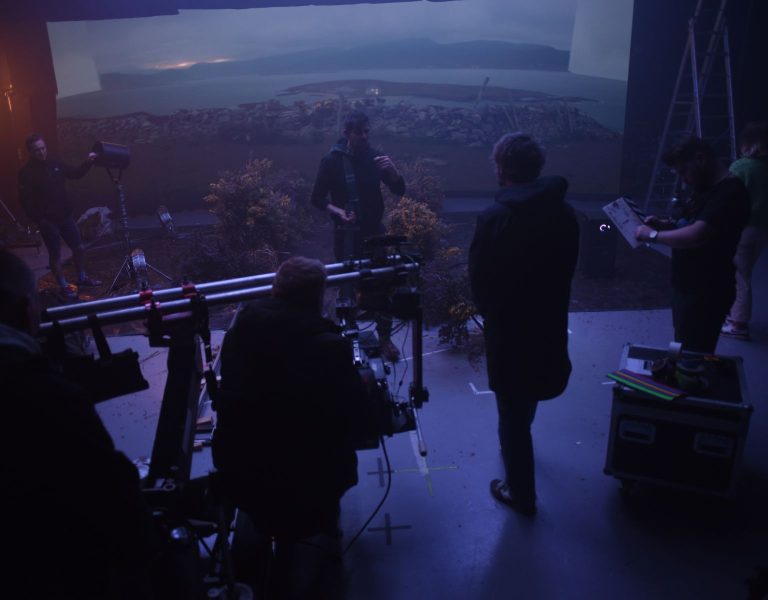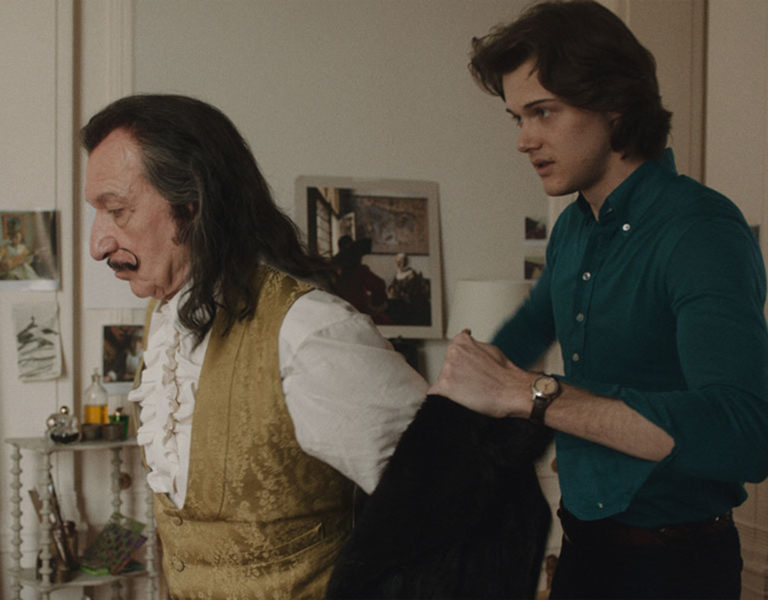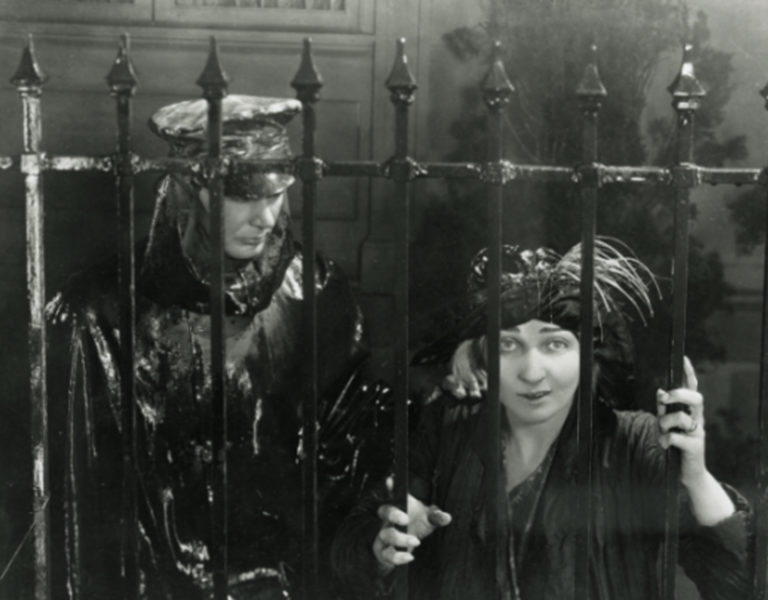Tangled web
Lensing the eight-legged invasion of a Paris banlieue was an exciting first feature project for cinematographer Alexandre Jamin.
The closing film of Venice Critics Week, Vermines unites two long-time collaborators: cinematographer Alexandre Jamin and director Sébastien Vaniček. Jamin tells us about the film’s innovative use of colour, choosing the perfect lenses for the job, and blending Hitchcockian techniques with film noir and neo-noir.

British Cinematographer: How did you get involved with Vermines and what appealed to you about the story being told?
Alexandre Jamin: I’ve known and worked with director Sébastien Vaniček for 10 years now. He proposed the project to me after it was spotted by Harry Tordjman, the producer. We’ve always had the same ambitions and the same aesthetic desires, challenging each other from one project to the next.
What I admire about Sébastien is he’s always kept a close team of allies and friends who have worked with him from his first short films to his first feature, Vermines.
The script for Vermines is not that of just any (genre) film. It tells the story of an invasion of poisonous spiders on a housing estate in the 93rd district of Paris (Seine-Saint-Denis) and how a group of friends try to survive, trapped in this now confined place.
It’s a bit like Dante’s Inferno revisited through the prism of animals, in a contemporary neo-noir cinéma vérité tone that’s violent and emotionally hard-hitting. I saw it as a real visual and technical challenge that won me over straight away.
BC: What was it about lensing this that appealed to you as a DP?
AJ: What really appealed to me about this project was the light and colour, how best we could story tell with it and how it transposed throughout the film. Ensuring we had selective movement directions that would mirror fear, chaos, spiders and a whole prism of different emotions. And finally adapting both technically and creatively to the challenge of shooting on very small, contained sets.

BC: Tell us about your initial conversations with Sébastien Vaniček about the look and mood for the film. What was his vision and what new perspectives did you bring?
AJ: The film is divided into seven main colour stages. The conversation with Sébastien Vanicek therefore focused on the artistic direction and colour intentions for the various sets, costumes and lighting atmospheres.
The additional perspective I was able to bring in was a machinery aspect as Sébastien had not had previous experience in it. Before Vermines, his narration of movement was more raw, having always used a handheld camera. But on a spider horror film, we wanted to bring a more poetic narrative to the movements, with more fluidity to rediscover the codes of the film noir and neo-noir that inspired us.
BC: What creative references did you and Sébastien exchange when developing the film’s visual language?
AJ: We wanted to revisit Alien by Ridley Scott by updating the subject to spiders, whilst also mixing the work of David Fincher on Se7en and Johan Renck on the TV series Chernobyl.
BC: When was prep, how long was it and what did it entail?
AJ: Prep lasted from September 2022 to January 2023. The calibration, camera and lighting tests were strategic for this film. We worked closely with Sébastien, and were in charge of all the artistic direction alongside the production designer.

BC: Can you run us through the locations?
AJ: We shot all the flat sets in a studio, the exteriors in Aubervilliers and the communal areas in a disused tower block in the Tazzarine Valley.
BC: How involved were you with scouting?
AJ: Location scouting is essential for me to be involved in. I need to get a feel for the sets, so that I can project myself into them artistically and technically.
BC: Which location was the most challenging to shoot at?
AJ: The most complicated set was certainly the disused tower block. We’d shot the whole studio section beforehand and we had to cheat as much as possible to connect rooms that weren’t connected at all. There was no electricity anywhere, so we had to use LED sources connected through WiFi and battery power.
BC: Tell us about your camera package. Which camera and lenses did you use and why?
AJ: Given the limited space on many sets, and the lack of light sources; we used a Sony Venice with the Rialto system, while for the B cam we had a Sony Venice 2. We worked with Transpacam, they had all the equipment we needed and provided us with consistent support throughout the shoot.
The lenses we chose were Zeiss Radiance. Initially they wouldn’t have been my first choice, my preference would have been a vintage lens primarily for the texture they give (we wanted to capture a dirty, washed-out image). But the VFX team advised us to use as few effects and artefacts as possible during capture, in order to get as clean of an image as possible.
Closely following the work of Mathieu Plainfossé AFC (cinematographer on Peaky Blinders season 6) who had worked alongside Focus24 (Ben Mitchell), I was inspired by the technical information, the 1.5 aperture and the full format that the Zeiss Radiance use. I wanted to integrate that into my own work so as to have a shallow depth of field, staying as close to the action and emotions as possible.
For the insect shots, we used dioptres, a SKATER Scope and macro lenses. A Panasonic 1HS was used for the close-ups and the Sony Alpha 7SIII for the generic shots.

BC: What was your approach to camera movement in your film, especially to create tension and atmosphere?
AJ: Our aim was to blend Hitchcock’s techniques and know-how with those of film noir and neo-noir. Vertical movements and very slow forward push-ins to direct the eye and capture attention by creating a feeling of constant danger.
The composition, for its part, is based on empty spaces, an image unblurred to disturb; grazing points of view, close to the ground, walls and ceilings like those of spiders.
BC: Tell us more about your approach to framing and composition?
AJ: We wanted to shoot in full format and have a 1.43:1 square format, because for us the information was often at the top. But a week before shooting, we changed our minds, because we were going too far in the sensory direction for a cinema film. We also needed to play with the more mainstream cinematographic codes. In the end we opted for a 2.39:1 format.
BC: What was your general approach to lighting?
AJ: I always travel with a suitcase of small Led lights and a 1HS camera with dioptres. On this film I think my best lighting allies were an Aputure Kit, a DASH Kit and Nanlite Tubes. I also added tulle and cotton to break up the LED aspect of the sources. For this kind of film, I also had to think about 2500 ISO.
BC: What was the most challenging scene or location to light?
AJ: The spaces were very small because we wanted to reproduce the real size of the flats where people live in the neighbourhoods to keep that asperity, the cinéma vérité, while at the same time making it elegant. The whole hall and staircase section of the set was especially challenging.
In the story the spiders are supposed to move around in the dark, so the lighting for the scenes had to match. In order for the actors to feel comfortable and guarantee VFX could do their job properly, we had to dose the lighting; a balance and dosage that was always mathematical.

BC: Who did the grade and what was their brief?
AJ: Fabien Pascal colour-graded Vermines, and has previously worked on projects such as The Three Musketeers, Mr. Nobody, and Falcon Lake.
The LUX Laboratory followed us, offering us their expertise, its team advising us at every stage of the shoot.
Before shooting, we only had three weeks of testing. We carried out tests in the studio and set preparation in order to make the right LUT for the film, with one or two extra stops for the VFX, so that I could compose my lighting. The subsequent work in colour grading was all the more crucial as the film’s colour story is divided into seven stages. Starting with a more saturated, softer image and ending with a washed-out, monochrome atmosphere.
We used the no-bleach technique as used in Alien, as well as the Fog filter to dilute the highlights and achieve the washed-out image we had in mind.
BC: What are you most proud of from your work on Vermines?
AJ: My background as a cinematographer working on video clips and short films on small budgets taught me to be ready and to bounce back quickly. My speed of execution in lighting and framing helped me adapt and rise to the various technical and creative challenges. And I’m most thankful for the team that was generous with sharing their knowledge with me.
BC: Are there any lessons you learned on this production that you’ll take onto future shoots?
AJ: As Vermines was my first feature film, I put together a team to support Sébastien and me, to advise us and help us improve our skills. It’s a team I hope to work with in the future.
The post-production stage was the richest. I was able to understand all the technical issues, which are becoming more and more fastidious, the video and projection standards, the contrast work…
Following the editing stages from start to finish plus some of the sound work helped me learn the construction of this film in all its aspects, right to the end.
BC: Are there any key crew members not yet mentioned that you’d like to highlight?
AJ: Big up to the all the team and cast.



















